A Slightly Different Way to Look at Impact
Executive Director Daniel Meloy shares how the Foundation provides tools and resources for educators to be better equipped in this blog post.

Lately I’ve been thinking a lot about the mission of the American Farm Bureau Foundation for Agriculture – to build awareness, understanding, and a positive public perception of agriculture through education – and our impact on kids.
There are so many ways for us to look at it. How many kids are we reaching? How much deeper is their understanding of agriculture after playing one of our games? What changes in kids’ attitudes about farming are we able to measure? When kids participate in our Purple Plow Challenge or read one of our accurate ag books, what’s the lasting effect on them?
But there’s another aspect of our impact that we don’t often look at – our effect on teachers. Whether we look at a second-grade teacher who is getting his class to learn about animals and their use on farms or a middle-school science teacher who wants her students to better understand ecosystems, animal behavior, and symbiosis, we’re providing the tools and resources for educators to be better equipped in their classrooms.
Nowhere is this impact more visible to me than in our On the Farm STEM experiences and science curricula development. For the past five years, with funding from the Beef Checkoff, we’ve brought educators out of the classroom and onto farms and ranches to learn first-hand about the beef lifecycle. Teachers from across the country have learned not just about agriculture, but how to bring agriculture into their classrooms to help teach science principles.
In fact, it was feedback from some of the early On the Farm participants that led us to create curricula for both middle school and high school science instruction. This, in turn, led to creating professional development opportunities so teachers could better understand how to engage their students and get them excited about science and agriculture.
I think back to when I was in school and what got me excited about a subject wasn’t necessarily the material, but the teacher. Teachers know that their own attitudes about a particular subject are often picked up by their students. When the teacher was excited, I got excited. That’s why I’m so pleased when teachers who participate in our On the Farm STEM program can’t wait to get back to their schools to share what they’ve learned.
When an educator says, “This has challenged me and made me a better teacher,” I know we’re having an impact. And I know that that teacher is going to be inspirational in their classroom. Their enthusiasm will be contagious, and their students will be excited to learn.
This past year has been difficult in so many ways, and I’m especially grateful for those people who found new and innovative ways to continue their work – and that of course includes teachers. The tenacity, resilience, and creativity of educators has been second to none, and so it was no surprise that when we presented our professional development programs virtually last summer, we had over 1,000 teachers register for them.
I’m excited for the coming months and for what we’ll continue to offer teachers through this program. We’ll be presenting more professional development virtually in July, and we plan to be back with an in-person On the Farm STEM experience in August.
I’ll continue to think about our impact on kids and their understanding of agriculture, but I’ll also be grateful that we’ll have the opportunity to inspire their teachers and show our appreciation for their work.
To learn more about our On the Farm STEM programs, visit www.onthefarmstem.com, or hear directly from teachers who have participated in the program in this video.
Daniel Meloy
Executive Director









